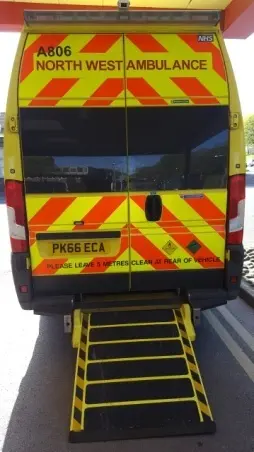Overdose & Emergency Response #
The signs and symptoms of an overdose will vary according to the drug or drugs in question. However, the general rule is to err on the side of caution. In other words, if in doubt, don’t delay: call for urgent medical help.
In considering the information below, note that an overdose will not produce all of the symptoms in the lists provided. A single symptom may be sufficient to indicate that immediate action is required.
DEPRESSANT OVERDOSE SYMPTOMS #
CNS depressants include both benzodiazepines and opioids. Symptoms of overdose may include:
- shallow breathing
- snoring and/or gurgling (due to partly blocked airways)
- unconsciousness or difficult to awaken
- unresponsiveness to physical stimulation
- blue fingertips or lips
- drowsiness
- disorientation or impaired co-ordination
Note that in the case of opioids, nausea and vomiting may occur, and pinpoint pupils may also be present (especially if other drugs are not involved).
Overdose of depressants can lead to respiratory failure, coma, brain damage and death.
ACTION: Call the emergency services immediately and ask for an ambulance. Monitor the patient, stay calm, and keep airways clear.
ALCOHOL POISONING SYMPTOMS #
As alcohol is a CNS depressant the list above is applicable. In addition, however, the following symptoms may occur:
- vomiting whilst asleep
- lost coordination
- seizures or spasms
- blue-tinged or pale skin
- low body temperature
- conscious but unresponsive (stupor)
Acute alcohol poising can lead to choking, respiratory failure, cardiac arrest, coma, brain damage and death.
ACTION: Call the emergency services immediately and ask for an ambulance. The following advice, which is offered via the NHS website, may help you to manage the situation until its arrival:
try to keep the patient awake and sitting up
provide water (assuming the patient is able to drink)
keep the patient warm
stay with the patient and remain calm
if the patient is unconscious, put him/her in recovery position (on their side), keeping airways clear, and monitor breathing
The following is a commonly produced list of what you must not do.
DO NOT:
- leave the patient to sleep it off
- make the patient vomit
- put the patient under a cold shower
- allow the patient to drink more alcohol
- give the patient coffee
- walk the patient around
Stay calm, and in so much as you are able, try to remain in control of the situation.
STIMULANT OVERDOSE SYMPTOMS #
The symptoms of stimulant overdose may include:
- chest pains
- severe headache
- seizures or convulsions
- unconsciousness
- breathing difficulties
- rapid heart rate
- disorientation / confusion
- high temperature and overheating without sweating
Stimulant overdose can lead to heart attacks, seizures, strokes and psychosis.
ACTION: Call the emergency services. The following are commonly suggested to be applicable until arrival of professional assistance:
- monitor temperature and keep the patient cool enough to prevent overheating
- provide sufficient water to prevent dehydration
- stay calm and try to calm the patient
GENERAL OVERDOSE SYMPTOMS #
For drugs not categorised as earlier, and in the absence of specific knowledge or expertise, the general principles apply. If in any doubt, call the emergency services. Until arrival of help, monitor the patient, exercise common sense, and remain calm.
CALLING FOR HELP #
In all cases obtain as much information as you can to aid the emergency services. The following may be helpful to them, if known:
- the age, weight and height of the patient.
- the identity of the drug or drugs used
- how much was taken
- whether any prescription medicines are being used
Don’t neglect the patient whilst obtaining this data, and do not delay the phone call, as these are both of primary importance.
Listen carefully to what the emergency service operator tells you. Ask for and take any advice offered regarding what to do whilst the ambulance arrives. This may include instruction to administer first aid or CPR.
If there is any of the overdosed drug left, keep it and hand it to the emergency services. Don’t let fear of police prosecution prevent you from acting.

Do not hesitate to call the emergency services

Footnote: In the unlikely event that the practices outlined in the first part of this book (ref #9) have been followed, information relating to the drugs/drugs in question and emergency service contact details may be available courtesy of a note held by the patient.